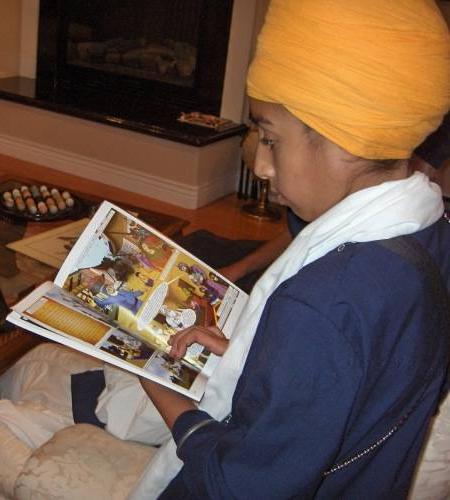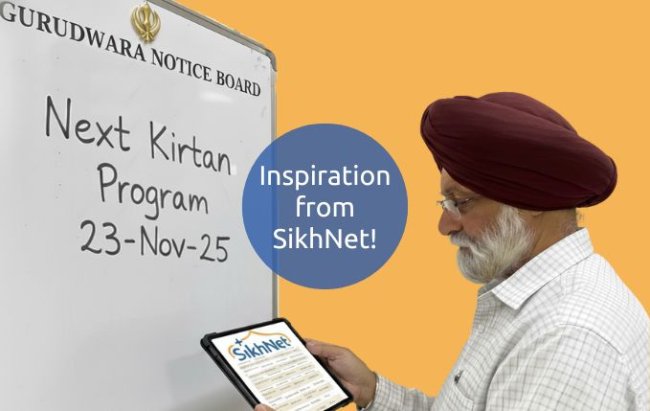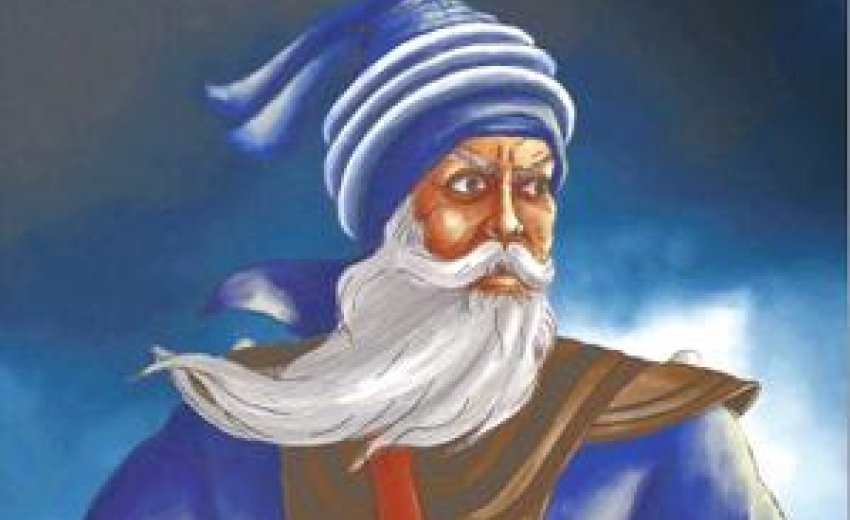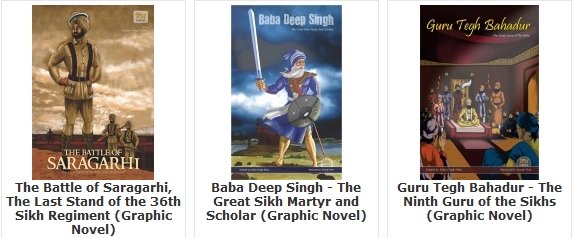 In a previous post, I reviewed the Sikh history comics published by Gyan Khand Media. The author of these comics, Daljeet Singh Sidhu, was kind enough to answer a few questions about his project.
In a previous post, I reviewed the Sikh history comics published by Gyan Khand Media. The author of these comics, Daljeet Singh Sidhu, was kind enough to answer a few questions about his project.
1. Can you tell us a little about yourself and your background? What were you doing before you began making these Sikh comic books, and what inspired you to begin creating them?
I was a software developer and then a software product manager before leaving the US to return to India and take up this project.
I believe comics are a great medium to educate as well as entertain kids. Christianity/Hinduism/Judaism can create animated shows and movies about their religion. For Sikhs, making movies of their Gurus is not blasphemous but considered highly irreverent. I think the next best medium after animation or movies is comic books.
Before we started creating Sikh Comics, the only source of comics based on Sikh history was Amar Chitra Katha. But I always felt that Amar Chitra Katha’s depiction of Sikh history and heroes left a lot to be desired. I personally found them really uninspiring. I mean, what can you expect if Guru Gobind Singh Ji is merely depicted as a warrior, like Shivaji or Rana Partap, and Guru Arjan Sahib’s brothers are depicted as petty thieves and his eventual martyrdom a result of family intrigue.
Additionally, the Amar Chitra Katha books are devoid of any Gurbani whereas we support the story line with relevant quotes from Guru Granth Sahib. Our comics pick the stories only from books of celebrated Sikh historians and writers like Bhai Veer Singh, Principal Satbir Singh, Gopal Singh, Tirlochan Singh et al. From what our readers tell us, our comics are not only entertaining but a great education tool too. They are inspiring and give the reader a taste of the Sikh chardi kala spirit.
2. Who is your target audience, and how have these comic books been received so far?
These graphic novels (or comic books as they call them in India) were initially targeted at children 11 years and above. But, a number of adults have told us that not only kids but adults too can learn much from these books. The quality of graphics and printing is attractive for all ages.
We have had an amazing response. We are already getting ready for the second print run of all three titles that are currently available.
3. Could you describe your process in creating one of these comic books?
I have one person who works full time to collect relevant literature/books on various topics, and to distill the information into a story. I turn that story into a script. Next, I sit down with my artists and graphic designers, and review the script in detail. I explain to them how I imagine each panel and page of the comic book. The artist then creates a rough of each page and after it is approved by the team, goes on to sketch out each page in pencil. Next, a junior artist uses a black pen to do “inking” of the sketches. This is then handed over to the colorist. Coloring is all done on the computer. Next, the graphic designer compiles all the pages into book. In the end we add the “lettering” to the graphics and send the comic to the printer.
While we wait for the print copies, the comic is published as a digital book on Amazon Kindle. We hope to start publishing on iTunes too within a month or two.
4. What have you enjoyed most about creating these comic books? Have there been any challenges?
It is really fun to see the comic book take shape from script to a printed copy. Best part is reading the first copy of each title to my five year old son, Kabir and seven year old daughter, Hernoor.
The biggest challenge is to pick the most authentic stories. For example, Guru Nanak Sahib’s life history is in several janamsakhis but not all of them are authentic. One way to stay authentic is to compile the script from books of only the celebrated Sikh historians like Bhai Veer Singh, Principal Satbir Singh and Trilochan Singh.
5. Do you have any favorite comics or books from other artists/authors? What is your favourite Sikh story that you have or will be featuring?
I have always been an avid comics reader. When I was growing up, I had a collection of over 500 comics including the entire series of Amar Chitra Katha, Tin Tin, Asterix and many local Indian comic series.
The first story published by us – Guru Tegh Bahadur – is perhaps my favorite Sikh story. I believe he is the only prophet in the history of the world that sacrificed his life to protect the rights of the people who were not of his faith. A true savior who saves not just the people that follow his faith but all humans. He gives a powerful message of universal brotherhood and oneness of mankind.
Our third title on the Battle of Saragarhi is another great story that is largely unknown to most of the world but puts to disadvantage many celebrated battles in the west that have received greater attention than the heroism of the small contingent of 21 Sikhs who fought to the last man against well armed Afghans over 500 times their size.
6. What stories do we have to look forward to, next?
We currently have six books on the drawing board, at different stages of development. These include a multi-volume series on Guru Nanak Sahib and comic books on Hari Singh Nalwa and General Sham Singh Attariwala. This year we intend to publish fourteen comic books including titles on all Sikh Gurus, and some major battles involving Sikhs during WW1 and WW2.
In addition to English language, we are publishing in Punjabi, Hindi and Dutch. There is also some interest to translate Sikh Comics into Tamil, Mandarin and Italian.
Thank you, Daljeet Singh, for taking the time to answer these questions and provide more insight into your comics, which are available at SikhComics.com and at Amazon.


